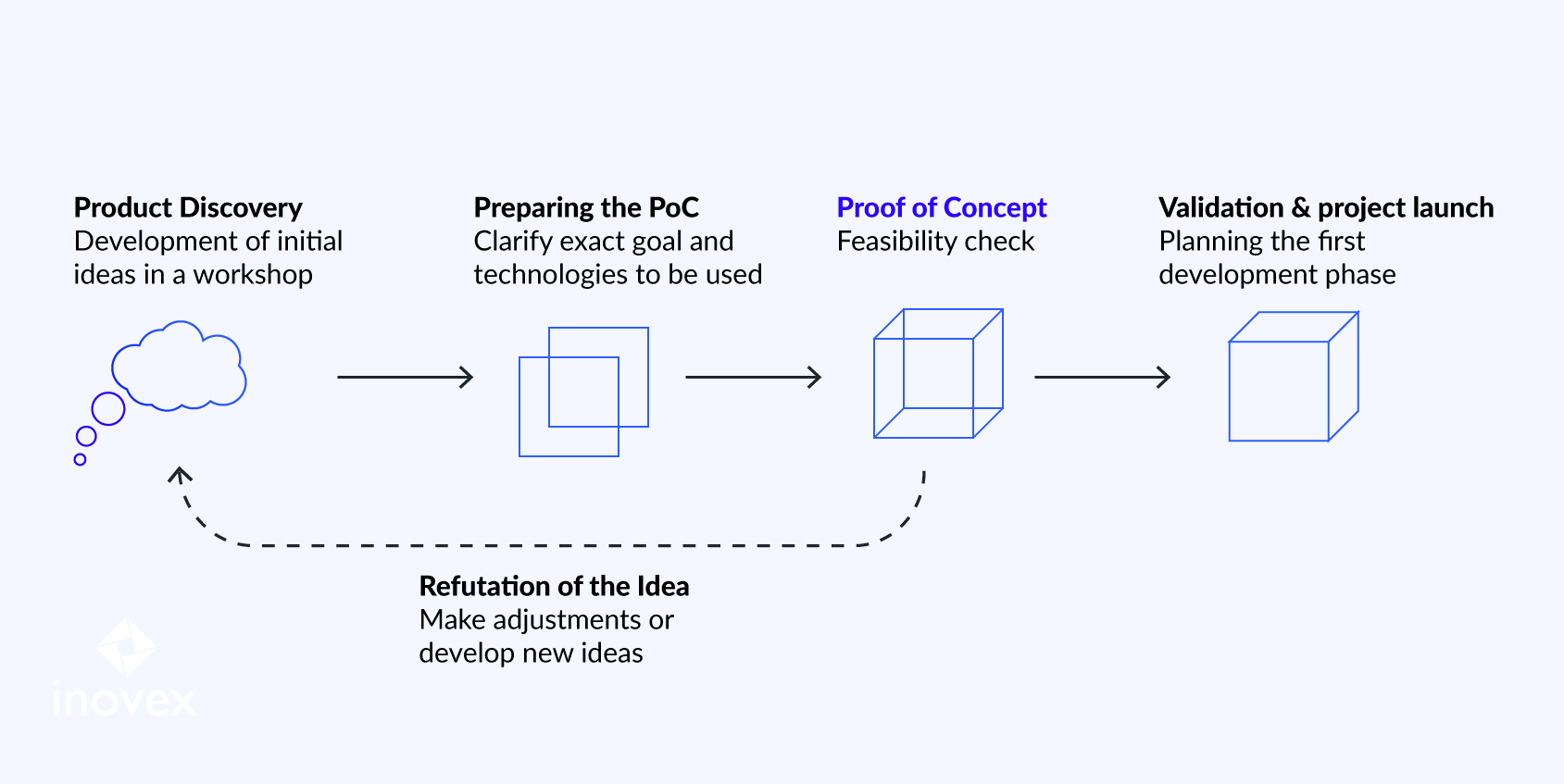Proof of Concept Factory
Used in the earlier stages of product development, our proofs of concept determine whether or not an idea has the potential to become a fully-fledged product and which requirements the subsequent project will place on the company – and they do so simply and with no technology bias.
Developing new digital solutions always carries a certain risk. In many cases, the effort involved and the technical feasibility cannot be accurately estimated, and the “shot in the dark” approach is too expensive. Nor are there always ready ways to test projects internally.
In order, however, to prevent good ideas from being discarded before their potential is recognised, our proofs of concept offer a solution for clarifying possible application scenarios and verifying feasibility.
Discovery and proof from a single source
Our offering ranges from product identification by means of product discovery to validation using a proof of concept, right through to the implementation of the project. With our help, prototypes and proofs of concept (PoC) can be rapidly created in order to provide decisive impetus for new projects.

We work with our customers in workshops and training courses to give structure to rough ideas and to shape them into tangible product designs. During the product discovery phase, therefore, we can unlock unimagined creative potential.
As soon as we have an accurate product concept, we can check its technical feasibility using a proof of concept. We work with our customers to review all the technical hypotheses posited and plan the next steps. Ideally, this will result in a brand-new product, even at this early stage.
Proof of Concept in two weeks
Validate your ideas at a fixed rateThanks to our extensive expertise, we can, in most cases, create a proof of concept within two weeks – and at a flat-rate price. The prerequisites for this scenario are that the general framework has been clarified and the desired results determined. Possible examples of proofs of concept include:
- Determining whether or not specific data is suitable for a particular application
- Technical drilldown through multiple layers (vertical prototyping)
- Functionality or performance testing with an innovative technical setup
As with all our projects, we will (of course) take a technologically agnostic approach and base the technical setup on our customers’ requirements and their existing systems.
PoC checklist
In order to validate an idea using a PoC and develop a new product, several basic conditions must be fulfilled. Our checklist provides initial information on the conditions required to produce a successful proof of concept:
- What is the idea to be validated?
- Who are the contact persons on the customer side (product owner and technical experts)? They must be able to work closely on the project during the sprints.
- What technical environment is needed? This is the basis of the subsequent PoC costs.
- For whom and how should the validation be visualized – from simple to C-level visuals? Should the PoC provide all the information for an offering?
- Should specific user stories be created?
Once these questions have been resolved, we define the methods we can use to validate the idea and create a proof of concept.


